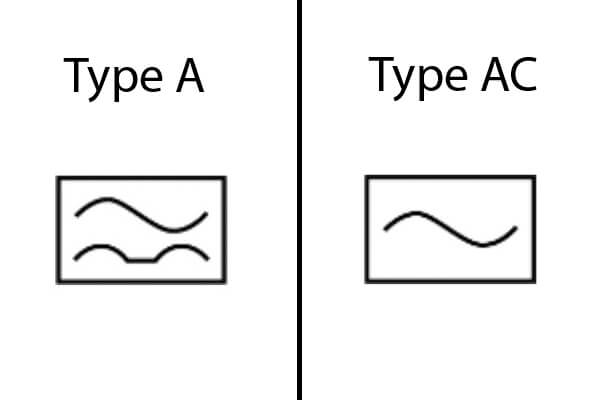There are many different types of RCDs, each with their own pros and cons.
An RCD that was commonly used in Western Australia is the Type AC RCD. However, as of April 2023, Western Power released an update in line with a new Australian Standard that says: “As stipulated in AS/NZS 3000:2018 Wiring Rules clause 2.6.2.2.2, Type AC RCDs must not be installed in Australia from 30 April 2023.”
This means Type AC RCDs are no longer used by licensed electricians; Type A RCDs are used instead.
What’s the difference between Type A and Type AC RCDs? Is there any benefit in introducing this Australian Standard and changing compliance laws?
Why Type A is the go to RCD
As of April 2023, all electrical installations will not pass compliance if they contain a Type AC RCD. That is why the Type A RCD is now the go to.
Western Power states that any Preliminary/Notice of Completion submitted after the date of the 30th of April 2023 requires Type A RCD switch installation, to assist with the protection of circuits containing both AC and DC electrical components.
Use of Type AC RCDs after April 2023 is illegal and as a result, will leave the electrical installation unsafe. This applies to the following:
- All new works started after this date (Preliminary Notice / Notice of Completion date to be used)
- Alterations to installations involving new circuits installed.
- Switchboard upgrades.
- Replacement of faulty RCD units.
- Builder’s power pole supplies (as they’re regarded as an electrical installation).
Why the change? Because Type A RCDs have slightly different properties.
What are Type A RCDs?
Type A RCDs are designed to work on both Sinusoidal alternating currents and residual pulsating direct currents making them superior to Type AC RCDs.
The following symbols can be found on RCDs to help identify which type they are.

Type AC RCDs are designed to detect residual alternating currents (sinusoidal) only.
Type A RCDs not only detect residual alternating currents, but can also detect pulsating DC residual current. DC is direct current such as is found in batteries and battery operated equipment or the direct output from solar power.
Type A RCDs can safely be used in electrical circuits that contain both AC and DC operated equipment.
Why Type A RCDs are important
Why is this change necessary? Because modern electrical equipment increasingly uses DC current, or can create DC electrical faults.
It’s important that any DC electrical fault is detected, and Type AC RCDs aren’t able to do this. (Did you know that in fact, electric shock from DC is often more dangerous than electric shock from AC? This was one of the reasons why AC was adopted worldwide despite it being invented after the discovery of DC!)
Electrical appliances and equipment such as the following can cause DC electrical faults:
- LED lighting
- Washing machines and dryers
- Dishwashers
- Electric Vehicle charging stations
- Inverters (such as solar power inverters)
Safety standards need to keep up as our lives change with new technology. In Australia, any upgrades or new electrical installations will now use Type A RCDs to better protect your electrical appliances, and most importantly, to protect you and your family!




